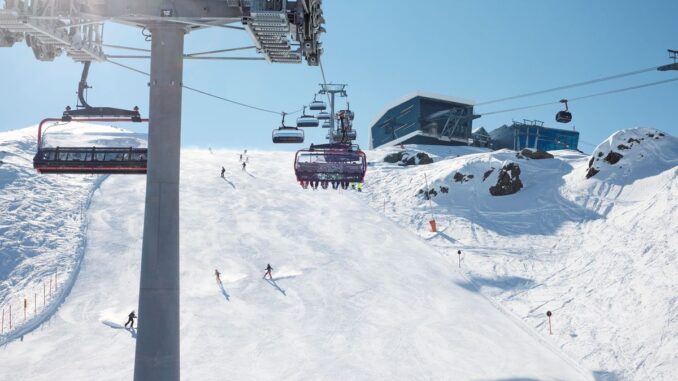
It’s mid-April in Ischgl, high in the Silvretta mountains of the Austrian Tyrol and Mark Nicholls enjoys a final flurry of Spring skiing in Austria.
Overnight, the valley has been covered in several inches of snow transforming the village into the winter postcard panorama many resorts have spent much of the winter dreaming about.
Higher up on the mountain, that translates into a joyous powder covering and an unexpected boon to the final days of a long alpine season.
Long season
Across the valley, just after 6am, there is the muffled ‘whump, whump, whump’ of detonations – avalanche safety precautions to make the terrain safe for skiers planning a snowy day on the slopes.
I had arrived in Ischgl the previous evening in the hope of a couple of days skiing at the end of an unpredictable season where many European resorts had suffered with erratic, unpredictable and virtually non-existent snowfalls.
Snuggled within the Paznaun Valley, Ischgl has a lot to offer for winter sport enthusiasts but above all when it comes to skiing it has that universal requirement of altitude.
Around 80 per cent of the ski terrain lies above 2000m meaning the resort enjoys a long season that opens late November and continues until 1st May. Thus, that guarantee of snow makes it a perfect location for Spring skiing.
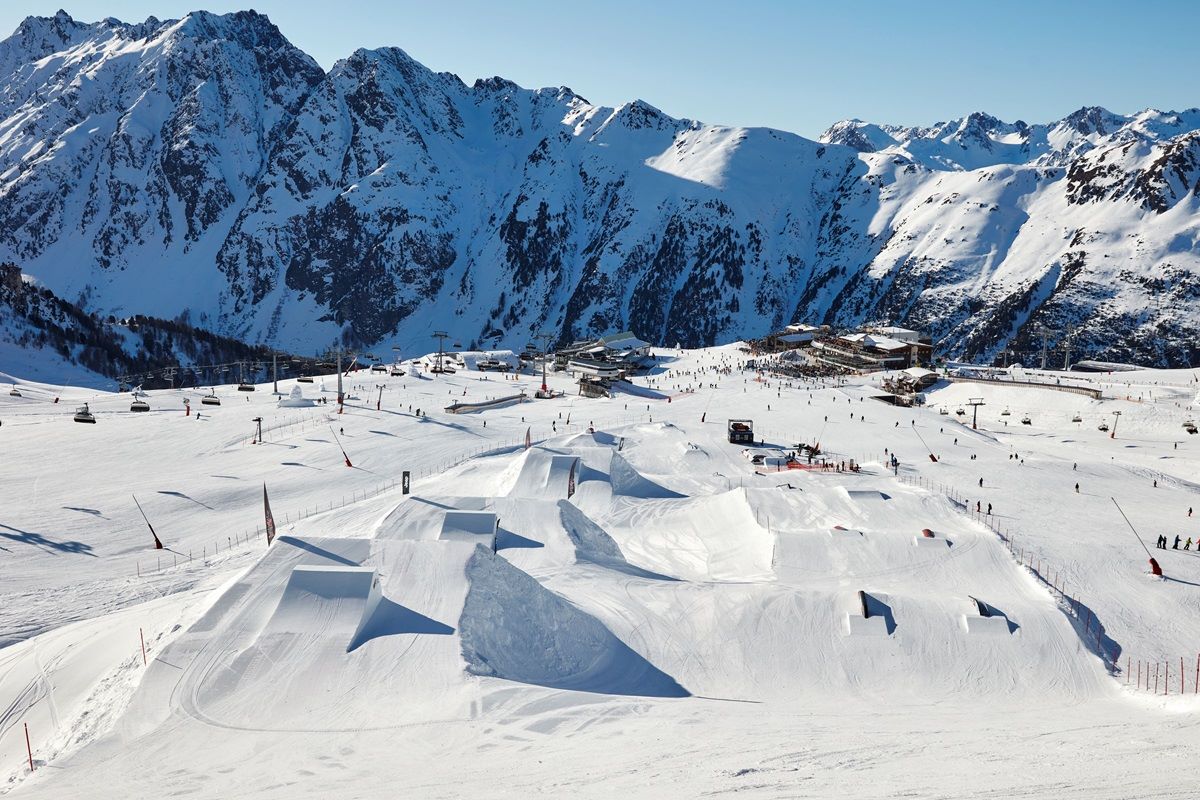
Profits re-invested
With snow flurries still in the air, our group boarded the Silvrettabahn gondola in the village, which sits at about 1400m, to head up to Idalp at 2320m above sea level.
Ahead of its time when it first came into service almost four decades ago – and scheduled for replacement within a couple of years – it remains a fast and efficient ride and soon deposited us at the epicentre of the Ischgl ski universe.
Indeed, if there was a Spaghetti Junction of ski lifts, this would be it with chair lifts and gondolas merging in Idalp’s natural bowl, criss-crossing and under-passing, sweeping off in different directions across the Silvretta Ski Area and a mountainside that at this late stage was offering some of the best snow conditions of the season.
Ischgl’s tourist chiefs are always keen to make the point that profits are re-invested in the infrastructure of lifts, gondolas and snowmaking facilities to ensure a positive experience for skiers accessing the 239km of groomed pistes.
Fabulous conditions
Once on the mountain, we were not too far from the Swiss border.
While the conditions and visibility allowed, given that it was still snowing throughout the morning, we headed in that direction. That saw us reach Alptrider Sattel at 2488m and sweep down wide reds and blues to Samnaun and cross into Switzerland where those who have the time and inclination can do a spot of duty-free shopping and return over what was once renowned as a smugglers route.
Given we were only around for a couple of days, we stayed on piste, on the move, to enjoy the expanse of the terrain which was uncrowded but with fabulous conditions.
Thomas Köhle, Managing Director of the Paznaun-Ischgl Tourist Association, joined us for the morning and his quick check on the lift figures showed around 4,000 skiers on slopes that can accommodate 20,000.
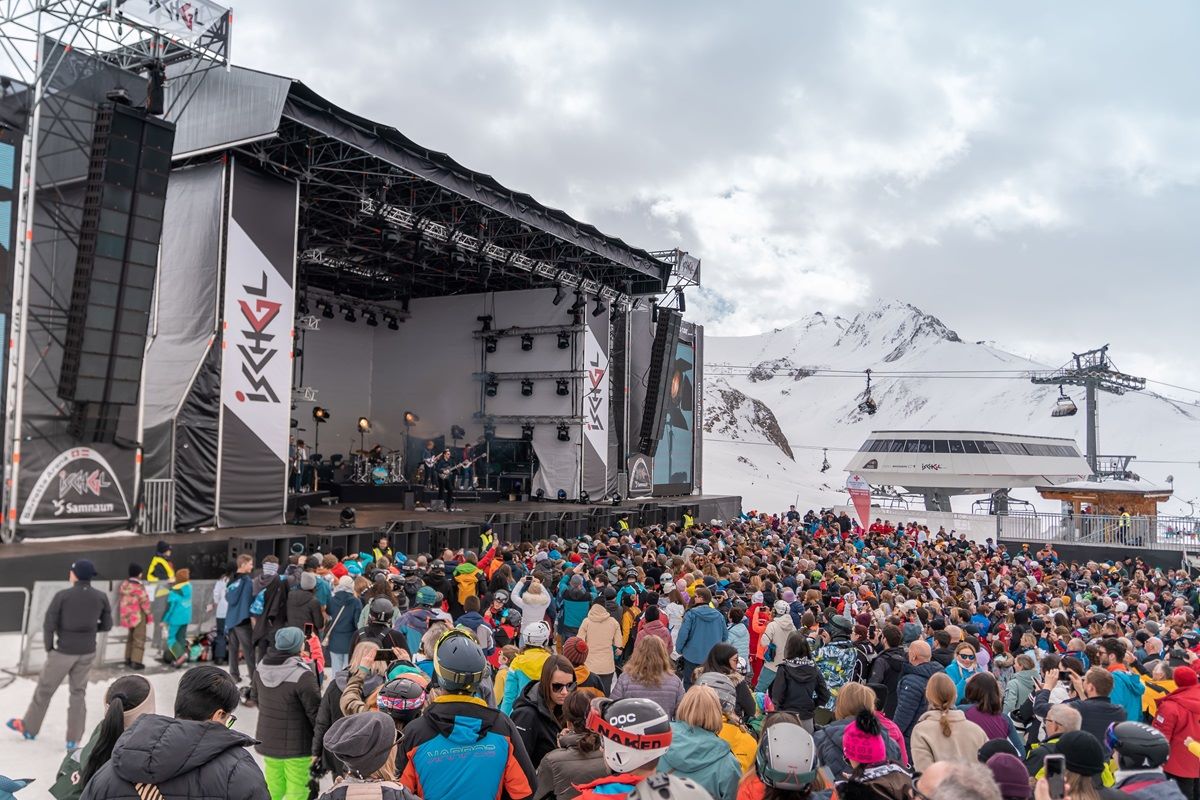
End-of-season concert
Having spent a morning skiing in the fresh snow, up as high as 2872m at Greitspitze and taking in a selection of black runs, we returned to Idalp for lunch at the Restaurant Idalp, before taking advantage of the empty slopes and great conditions into the afternoon.
Idalp is also the location for the renowned concerts that Ischgl stages, particularly the end-of-the season show, which this year stars Black-Eyed Peas on 30th April. Previous “Top of the Mountain” acts have ranged from Elton John and Mariah Carey to Robbie Williams and George Ezra.
Day two saw even better conditions as we ate up the kilometres of piste, with a further 25cm of snow having fallen.
The ski region of Ischgl is large and rewarding, particularly for more experienced skiers, with red lines dominating the piste map but there are blues and blacks too and off-piste opportunities, a snow park, as well as runs all the way back down to the village.
Meanwhile the nearby ski areas of Galtur, Kappl and See offer a gentler perspective and are known as family-ski destinations. Paznaun also has cross-country skiing, snow shoeing and winter hiking trails.
Fresh approach
Ischgl has long had a reputation as a party destination with a strong après-ski scene, but more recently the emphasis feels as though it is subtly changing.
The ‘relax, if you can’ mantra remains but steps are being taken to curb après-ski excesses.
While the traditional après hotspots such as the Kuhstall, Trofana Alm and Nikis Stadl remain popular, the tourist authorities have introduced some interesting rules to rein back any over-enthusiasm after a day on the slopes.
These include a ban on wearing ski boots in the resort after 8pm in an effort to slow down the après-ski atmosphere (supposedly to encourage revellers to take a break from non-stop drinking and change at their hotels).
That has seen a mellowing and the emphasis shift from the ‘party town aura’ and more towards events, entertainment, cuisine and wellness.
Many hotels have superb spas and pools and given that there are several five-star and five-star superior hotels, plus some 70 four-star superior hotels, that shouldn’t be a surprise.
And a new attraction is the Silvretta Therme, a huge public spa centre with pools, saunas, steam rooms and wellness areas with separate family and adult-only zones.
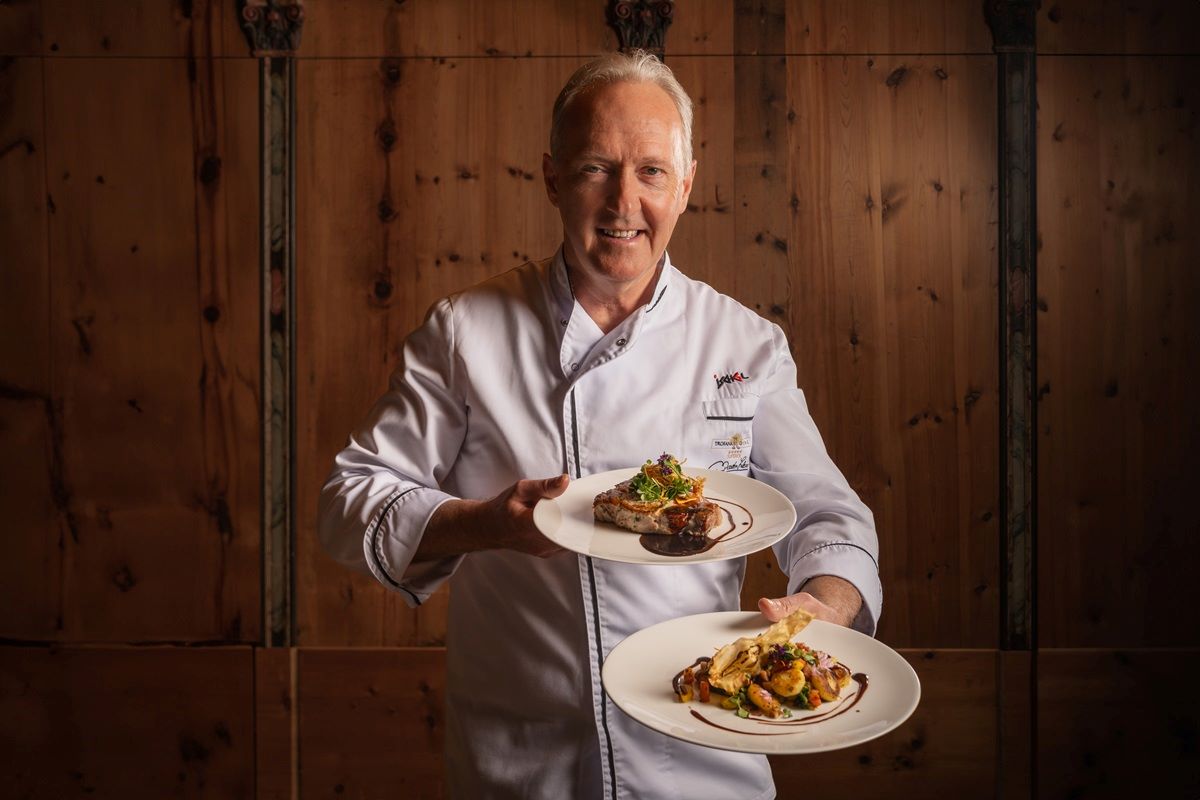
Culinary destination
Fine dining is not new to Ischgl. It has enjoyed a reputation for culinary excellence for a number of years, in the village and on the mountain, but the ever more imaginative dishes devised by award-winning chefs is further raising the profile, both in winter and summer.
Within that, there still remains a strong sense of tradition in the Tyrolean food and you will always find Wiener Schnitzel (€29), Filetspitzen stroganoff (€32) or Tirolergrostl (roast potatoes, pork and eggs) for €20, alongside modern innovations in locations such as the Idalp Restaurant on the mountain.
Austria is more closely aligned with Toque awards, rather than Michelin stars, but the quality of the cuisine remains unsurpassed.
A pioneering figure has been Martin Sieberer from the Paznaunerstube at the five-star Trofana Royal hotel in the heart of Ischgl.
Having established gourmet dining when he arrived nearly three decades ago, he believes that it is the guests that drive the culinary standards, saying:
“They want good food. It is what they expect, and what they get when they come to Ischgl. It is a resort where you find good hotels with good food, good skiing and wellness and nature in summer and winter.”
Gourmet tour
Showcasing this cuisine is what guests expect, such as during gourmet tours where Sieberer and other chefs deliver a range of fabulous dishes, paired with wines such as Reisling and Austrian Pinot Noir.
During a tour of Ischgl’s top restaurants, for example, we saw Andreas Spitzer from Hotel Fliana present a veal and tuna tartare with a ring of avocado crème; Gunther Döberl served oyster mushrooms in caviar in three styles; Martin Sieberer, with sons Michael and Thomas, offering a highlight of lobster with carrot in an “alpine curry” sauce using herbs from the region, followed by smoked eel pasta; and Patrick Raass from the Scholssherrnstube at the Schlosshotel makes guests a filet of veal with asparagus.
Visitors can enjoy a range of menus at specific restaurants, participate in the resort’s “Dine.Around” concept, or enjoy the popular food festivals and cooking competitions that are staged throughout the year.
As tourist boss, Köhle remarks:
“Ischgl has some of the best chefs in the Alps.”
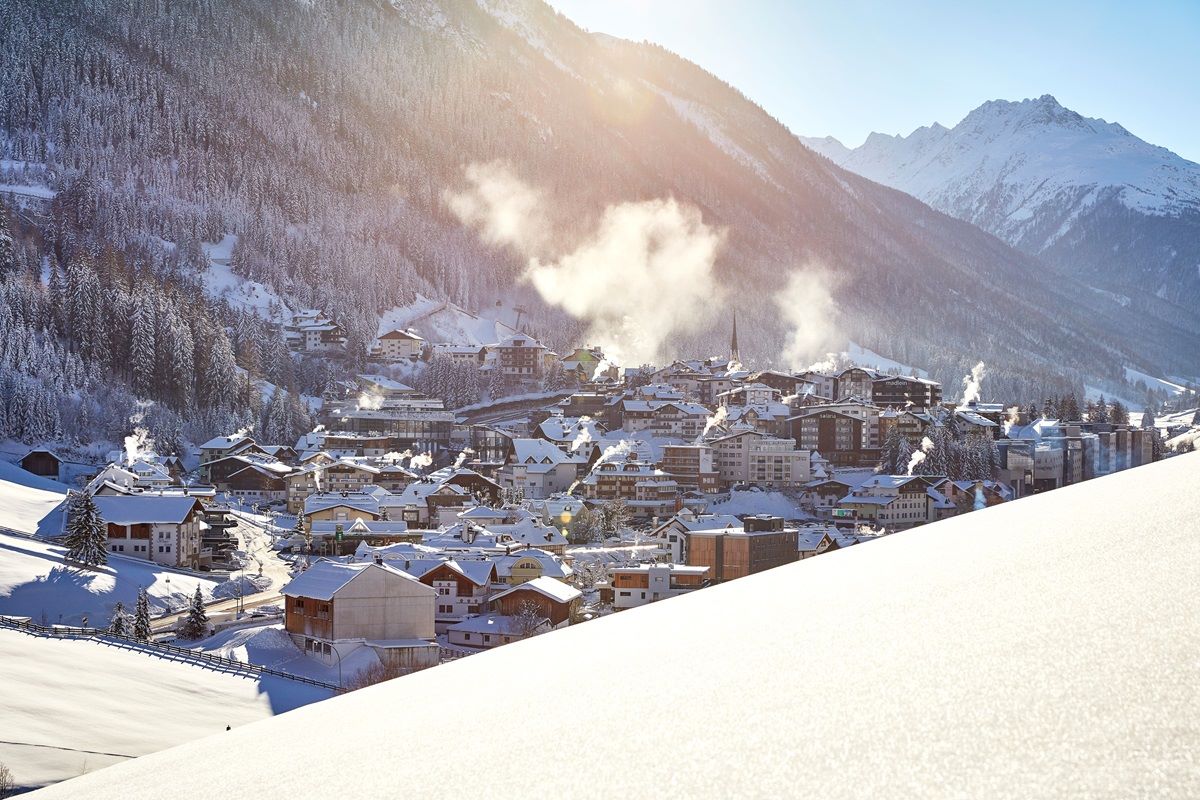
Summer season
While the end-of-the-season snow was most welcome, Ischgl already has an eye on the summer and has invested in hiking, mountain biking and climbing routes.
However, while the summer season opens in early July, there is still an imbalance with winter visitors, as Köhle explains:
“Our split is 91 per cent to 9 per cent from winter to summer. That is still 500,000 bed nights in the summer, but we want to encourage more people to come and enjoy hiking and mountain biking.”
But if you’re a hardened winter sports addict, and perhaps didn’t manage to get to Ischgl for some end-of-season skiing, don’t worry, you won’t have to wait too long.
The next winter ski season starts again in late November.
Factbox:
Accommodation: Mark Nicholls stayed at the 36-room Hotel Zalwonder. Set into the hillside facing the town, it opened at the end of 2022 and has a cosy bar, excellent restaurant and comfortable rooms with super views over Ischgl. There is also a spa, sauna and outdoor sky pool to relax in after a day on the slopes and the Silvrettabahn is a short walk away.
Flights: London Gatwick to Innsbruck with Easyjet and a 90-minute transfer to Ischgl.
Ski pass: A six-day Silvretta Ski Pass is €387.
Ischgl’s culinary delights: www.ischgl.com.
For more information please visit: www.ischgl.com and www.paznaun-ischgl.com.
Author Bio:
Mark Nicholls is an award-winning freelance travel writer and author, based in the UK and has written for a range of national titles, specialist magazines and international websites and operated as a war correspondent in locations such as Iraq and Afghanistan.
Photographs courtesy of Paznaun-Ischgl Tourist Board


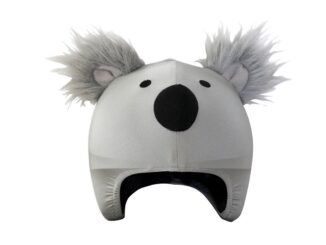
Be the first to comment